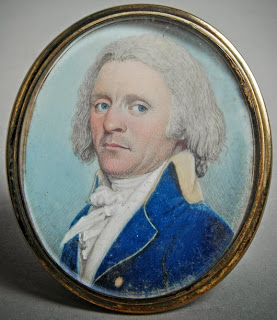As anxious shipwrights and boisterous bystanders gathered at Edmund Hartt’s Boston shipyard on the cool morning of October 21, 1797, they were about to witness the third attempt to send USS Constitution into its “destined element.”
The whole story of the day, and the previous frustrations, has been well told, but one mystery continues to linger. According to most twentieth century accounts of the launch, a man named Captain James Sever had the honor of christening Constitution before the ship slid down the launching ways into Boston Harbor.
Ira Hollis, whose 1900 book The Frigate Constitution: The Central Figure of the Navy Under Sail did much to revive interest in the aging ship, had this to say: “The successful launch finally occurred on October 21. Captain James Sever, whose ship was on the stocks at Portsmouth awaiting congressional action, went down to break a bottle of wine over her bow.”1
This built on the more elaborate story offered by the United Services Journal in 1891:
“The tides were high and favorable, and at half-past twelve Captain James Sever stood on the heel of the bowsprit, provided with a bottle of choice old Madeira that had been donated from the valuable and well-stocked cellar of Hon. Thomas Russell, a prominent Boston merchant. She glided easily and majestically into the water, and was brought up with her starboard anchor within two hundred yards of the ways. As she then floated, she drew eighteen feet aft and fourteen feet forward.”2
At first blush, the story seems credible enough. But if one asks the simple yet fateful question, “is it true?” things start to unravel. To begin with, none of the contemporary newspaper accounts of the event (and there were many) make mention of Captain Sever’s presence. Was his role was too insignificant, or was he simply not there?
Sever was born in Kingston, Massachusetts in 1761. He graduated from Harvard College in 1781 and immediately received an ensign’s commission in the 7th Massachusetts Regiment. He later transferred to the 4th Massachusetts Regiment and continued in service until 1784. After making several cruises to Europe, he was appointed one of the six captains approved under the Naval Act of 1794.
Sever was appointed superintendent of the frigate building at Portsmouth, New Hampshire (USS Congress) in 1795. The government suspended construction in March 1796 when the United States signed a treaty with Algiers.
Construction resumed on July 16, 1798, and Congress was launched on August 15, 1799. James Sever served as the ship’s commander through the Quasi-War with France. After a less-than-spectacular cruise, Congress returned to the United States and was placed in ordinary in 1801.
Stephen Higginson, the navy agent at Boston, thought “Sever will be an excellent naval commander; he is a cool, firm, discreet, gentlemanlike man, who feels and conducts with dignity and zeal proper to his station; he is remarkable for discipline and regularity.”3
Charles Morris (Constitution’s first lieutenant in 1812), served under Sever on Congress and held an only partially flattering opinion of his first commander: “He was well educated, very austere and distant in his manner, not very amiable in temper, rigid in his discipline, and very punctilious in all matters of military etiquette. I believe he was rather deficient in seamanship, but remarkable coolness and self-possession in trying situations enabled him to decide and direct what was proper to be done better than most of his officers who better understood their profession practically.”4
A portrait miniature of Sever seems to confirm Morris’ assessment.

According to historian Christopher McKee, Sever was “an avid and vocal Federalist,” which might help explain his presence at the launch.5 The frigate was seen as a triumph by the ardent Federalists of Boston, while the Democratic press presented the ship and the failed launches as little more than a costly farce. Sever left the navy in 1801, was involved with the Massachusetts Society of the Cincinnati, and died in 1843.
It would have been easy for Sever to visit Boston, especially if the ship he was superintending had been put on hold. And yet, it is difficult to discover why, as a fairly high-placed representative of the federal government, he should be left out of every contemporary account of the launch. Perhaps more digging will reveal the truth about that day in October 1797.
1 Ira Hollis, The Frigate Constitution: The Central Figure of the Navy Under Sail (Boston: Houghton, Mifflin and Co., 1900), 58.
2 History of the United States Frigate Constitution, part 1, United Services Journal, 1891, 47.
3 G.W. Allen, Our Naval War with France (Boston: Houghton Mifflin, 1909), 131.
4 Charles Morris, The Autobiography of Commodore Charles Morris, U.S. Navy, reprint ed. 2002, 4.
5 Christopher McKee, A Gentlemanly and Honorable Profession (Annapolis, Md.: Naval Institute Press, 1991), 417.
The Author(s)
Matthew Brenckle
Research Historian, USS Constitution Museum
Matthew Brenckle was the Research Historian at the USS Constitution Museum from 2006 to 2016.